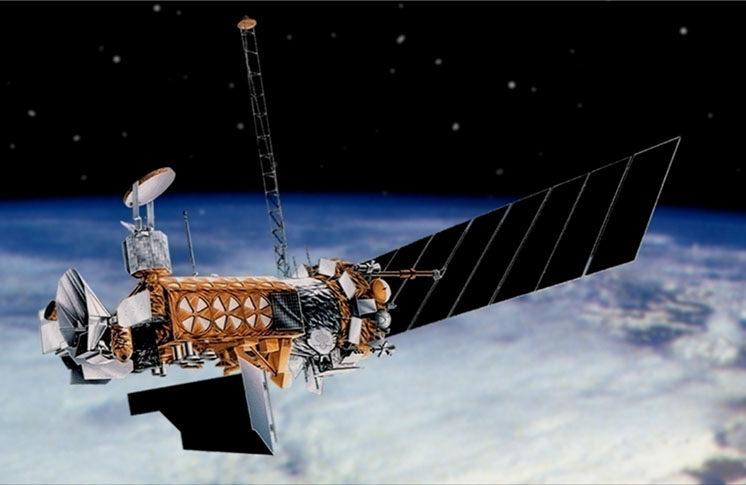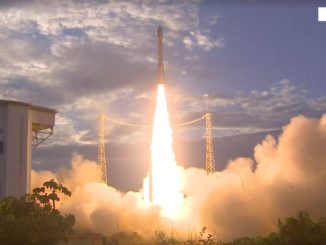
Attempts to restore the U.S. Air Force’s newest weather satellite to service have ended, a military spokesperson said Wednesday, cutting a planned five-year mission short less than two years after it launched.
The Defense Meteorological Satellite Program Flight 19, or DMSP F19, spacecraft stopped responding to commands from mission control Feb. 11, and engineers have concluded that a power anomaly inside the satellite is responsible for the weather observatory’s failure.
Ground controllers have ceased all recovery efforts with the DMSP F19 satellite, according to Jennifer Thibault, a spokesperson for the Air Force’s 50th Space Wing at Schriever Air Force Base, Colorado.
“It was determined from detailed analysis that there was a power failure within the command and control system affecting the onboard crypto gear,” Thibault wrote in an emailed statement released to Spaceflight Now. “Due to this failure commands are unable to reach the command processor.”
The DMSP F19 was the latest in a series of polar-orbiting weather satellites jointly operated by the Air Force and NOAA. The DMSP weather observatories help forecasters predict storms, clouds, fog and dust storms that could inhibit global military operations.
The Air Force reassigned the DMSP F17 satellite launched in 2006 into the primary position in the fleet after DMSP F19’s failure in February.
DMSP 19 continues to broadcast telemetry to the ground, officials said, but the satellite’s command system mishap is irreversible, affecting both the prime and backup command chains.
“The nature of the anomaly is such that both the A and B side of the command and control subsystem failed, eliminating the possibility of commanding via a back-up command path,” Thibault said. “The DMSP team is still in contact with the vehicle and will continue to monitor and gather telemetry as long as the vehicle maintains Earth-pointing.”

DMSP F19 launched April 3, 2014, atop a United Launch Alliance Atlas 5 rocket from Vandenberg Air Force Base, California.
Designed for a five-year mission, the satellite was manufactured by Lockheed Martin in the late 1990s and kept in storage until engineers readied it for liftoff.
“There is no impact to the strategic weather mission, and the DMSP constellation remains able to support warfighter requirements through resilient systems and processes,” the Air Force said in a statement earlier this month. “The constellation continues to provide weather and atmospheric data to users as it has for the past five decades.”
With the loss of DMSP F19, five DMSP weather satellites left in in the Air Force’s constellation, all well beyond their design lifetimes.
One more legacy DMSP satellite is built and could be launched to replace DMSP F19.
Congress last year ordered the DMSP program terminated and the DMSP F20 satellite scrapped, directing the Air Force to move on to a next-generation weather satellite design to replace the DMSP series, which has been launching since the 1970s.
But the Air Force intends to keep DMSP F20 in climate-controlled storage at a Lockheed Martin clean room in Sunnyvale, California, a bit longer in case it needs to be called up for launch in the coming years.
Email the author.
Follow Stephen Clark on Twitter: @StephenClark1.



